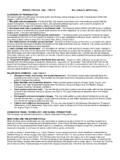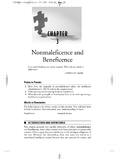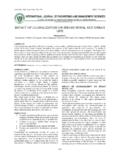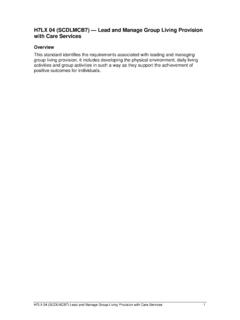Transcription of EFFECTIVE MARKET-BASED PAY SYSTEMS Updated Quarter …
1 1 EFFECTIVE MARKET-BASED PAY SYSTEMS Updated Quarter 4, 2005 Overview As the number of available compensation surveys grows and labor markets become increasingly dynamic, more and more companies are establishing MARKET-BASED pay SYSTEMS to replace other types of job evaluation SYSTEMS . This is driven largely by an organization s ongoing need to offer competitive rates of pay to attract and retain employees. Most employers have at some point dealt with pay programs that are not sufficiently linked to their relevant external labor market (s) and realize the criticality of a pay system that monitors and responds to market pay changes proactively.
2 But the effectiveness of any job evaluation system , measured by its fairness and consistency in evaluating jobs and distinguishing pay levels, is the true test of its value. This Trends+Issues provides a logical process for establishing and maintaining an efficient MARKET-BASED pay system . Change is a universal attribute of today s workplace. For a multitude of reasons, nothing stays the same for long. Organizations rethink strategy and rebuild, departments reorganize, jobs are restructured and employees retrained.
3 And because technology has enabled almost all organizations to move at a faster pace, change is more often thrust upon us than it is phased in over time. As such, adaptability has become synonymous with viability in today s business environment. More often than not, market -leading organizations foresee external trends and shifts impacting their industry and customer base and respond to them efficiently and effectively. High performers develop the skills and knowledge they need to thrive despite a reshuffling of priorities and focus.
4 And EFFECTIVE pay strategies and reward SYSTEMS anticipate and respond to a changing organization efficiently. Frequently today s executives voice an opinion that goes something like this: Our employees are the most important asset and paramount to our success . We must empower them, treat them fairly and reward them well for their positive contributions and results. At the risk of diminishing this enlightened (and often sincere) sentiment, talk is cheap and can fuel employee cynicism if not supported by tangible programs and actions.
5 How does your pay system score in terms of fairness, validity and consistency? Key Questions to Evaluate Your Organization s Pay system : 1. Does your pay system respond to changes in the external labor market ? 2. Are rates of pay defendable to manager and employee alike? 3. Does the system differentiate reward levels based on skills, responsibility, contribution, performance and other important variables? 4. Is the pay system linked to the corporate strategy? 5. Is the pay system cost EFFECTIVE ?
6 Is it easy to explain and understand? 6. Do employees understand the process used to determine their pay levels and consider it to be fair? 7. Is your organization able to hire and retain quality staff? An EFFECTIVE pay system scores a yes on every question. Well-designed market pay SYSTEMS are proving to be the most responsive to changes in the external marketplace and the simplest to administer and communicate. 2 An External View External market pay rates are an important gauge of the competitiveness of internal pay targets and actual pay rates.
7 And studies suggest that this external comparison is gaining strength as the primary determinant of pay for most organizations. The shift toward MARKET-BASED job evaluation SYSTEMS and away from internal equity SYSTEMS (such as factor comparison and point factor, which place primary importance on internal relationships in valuing jobs) has occurred for two fundamental reasons: 1) market pay SYSTEMS are easy to understand and flexible enough to respond to changes that directly impact an organization and its industry, and 2) today s typical employer/employee affiliation tends to be shorter and grounded in the here and now as opposed to the career length affiliations of past generations that elevated the importance of internal equity over external competitiveness.
8 Monitoring the market provides important information, such as an understanding of when a scarcity of talent drives up pay levels and when this scarcity subsides or even results in a glut of candidates for certain jobs that might lower pay levels. Employers can also monitor industry changes by observing benchmark job changes over time. All of this information strengthens the link between an organization and its relevant labor markets and averts the risky endeavor of ignoring competitors and making decisions in a vacuum.
9 Much has been written about the free agent mentality of today s workers particularly younger ones and the absence of strong company loyalty and commitment. While enough long tenured employees exist to avoid over-generalizing the situation, it is hard to deny that times have changed. Job loss across all levels of corporate America during the 1980s and 1990s due to restructuring, mergers and acquisitions, and technological advancements directly impacted many employees in today s workforce or the parents, relatives, neighbors and friends of today s workers.
10 The lessons learned from that time period were that loyalty to an organization did not always save employees from losing their jobs nor did it provide them with the up-to-date skills needed to survive (and thrive) in our technology-driven world. From this reality has emerged a worker who wants to control his own career and continue to acquire marketable skills and an employer who recognizes the importance of a skilled staff that continues to learn and adapt. By virtue of what they value and consider important, both parties tend to be more focused on external competitiveness than they are internal equity.







